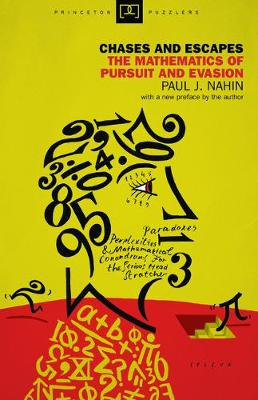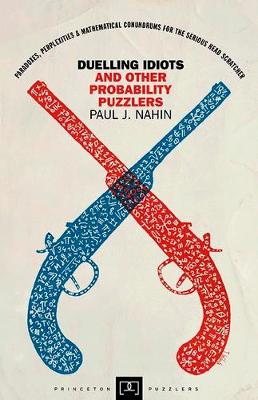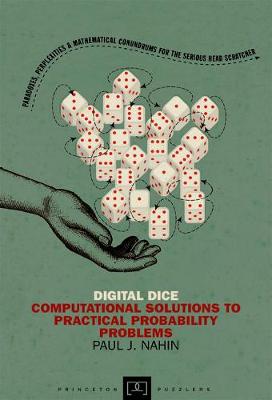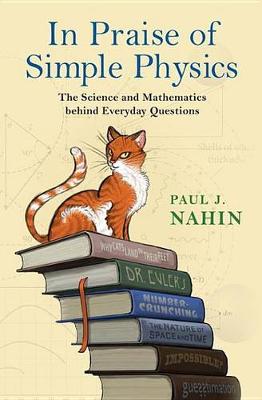Princeton Puzzlers
4 total works
We all played tag when we were kids. The rules couldn't be easier - one player is designated "it" and must try to tag out one of the others. What most of us don't realize is that this simple chase game is in fact an application of pursuit theory, and that the same principles of games like tag, dodgeball, and hide-and-seek are at play in military strategy, high-seas chases by the Coast Guard, even romantic pursuits. In "Chases and Escapes", Paul Nahin gives us the first complete history of this fascinating area of mathematics. Writing in an accessible style that has been enjoyed by popular-math enthusiasts everywhere, Nahin traces the development of modern pursuit theory from its classical analytical beginnings to the present day. Along the way, he informs his mathematical discussions with fun facts and captivating stories.Nahin invites readers to explore the different approaches to solving various chase-and-escape problems. He draws upon game theory, geometry, linear algebra, target-tracking algorithms - and much more.
Nahin offers an array of challenging puzzles for beginners on up, providing historical background for each problem and explaining how each one can be applied more broadly. "Chases and Escapes" includes solutions to all problems and provides computer programs that readers can use for their own cutting-edge analysis. This informative and entertaining book is the first comprehensive treatment of the subject, one that is sure to appeal to anyone interested in the mathematics that underlie the all-too-human endeavor of pursuit and evasion.
Nahin offers an array of challenging puzzles for beginners on up, providing historical background for each problem and explaining how each one can be applied more broadly. "Chases and Escapes" includes solutions to all problems and provides computer programs that readers can use for their own cutting-edge analysis. This informative and entertaining book is the first comprehensive treatment of the subject, one that is sure to appeal to anyone interested in the mathematics that underlie the all-too-human endeavor of pursuit and evasion.
What are your chances of dying on your next flight, being called for jury duty, or winning the lottery? We all encounter probability problems in our everyday lives. In this collection of 212 puzzles, the author challenges us to think creatively about the laws of probability as they apply in playful, sometimes deceptive, ways to a fascinating array of speculative situations. Games of Russian roulette, problems involving the accumulation of insects on flypaper; and strategies for determining the odds of the underdog winning the World Series all reveal intriguing dimensions to the working of probability. Over the years, the author, a veteran writer and teacher of the subject, has collected these and other favourite puzzles designed to instruct and entertain math enthusiasts of all backgrounds. If idiots A and B alternately take aim at each other with a six-shot revolver containing one bullet, what is the probability idiot A will win? what are the chance it will snow on your birthday in any given year? how can researchers use coin flipping and the laws of probability to obtain honest answers to embarrassing survey questions?
The solutions are presented here in detail, and many contain a profound element of surprise. And some puzzles are beautiful illustrations of basic mathematical concepts: "The Blind Spider and the Fly", for example, is a clever variation of a "random walk" problem,, and "Duelling Idiots" and "The Underdog and the World Series" are straightforward introductions to binomial distributions. Written in an informal way and containing a plethora of interesting historical materials, this book should be of interest for those who are fascinated by mathematics and the role it plays in everyday life and in our imaginations.
The solutions are presented here in detail, and many contain a profound element of surprise. And some puzzles are beautiful illustrations of basic mathematical concepts: "The Blind Spider and the Fly", for example, is a clever variation of a "random walk" problem,, and "Duelling Idiots" and "The Underdog and the World Series" are straightforward introductions to binomial distributions. Written in an informal way and containing a plethora of interesting historical materials, this book should be of interest for those who are fascinated by mathematics and the role it plays in everyday life and in our imaginations.
Some probability problems are so difficult that they stump the smartest mathematicians. But even the hardest of these problems can often be solved with a computer and a Monte Carlo simulation, in which a random-number generator simulates a physical process, such as a million rolls of a pair of dice. This is what "Digital Dice" is all about: how to get numerical answers to difficult probability problems without having to solve complicated mathematical equations. Popular-math writer Paul Nahin challenges readers to solve twenty-one difficult but fun problems, from determining the odds of coin-flipping games to figuring out the behavior of elevators. Problems build from relatively easy (deciding whether a dishwasher who breaks most of the dishes at a restaurant during a given week is clumsy or just the victim of randomness) to the very difficult (tackling branching processes of the kind that had to be solved by Manhattan Project mathematician Stanislaw Ulam).In his characteristic style, Nahin brings the problems to life with interesting and odd historical anecdotes.
Readers learn, for example, not just how to determine the optimal stopping point in any selection process but that astronomer Johannes Kepler selected his second wife by interviewing eleven women. The book shows readers how to write elementary computer codes using any common programming language, and provides solutions and line-by-line walk-throughs of a MATLAB code for each problem. "Digital Dice" will appeal to anyone who enjoys popular math or computer science.
Readers learn, for example, not just how to determine the optimal stopping point in any selection process but that astronomer Johannes Kepler selected his second wife by interviewing eleven women. The book shows readers how to write elementary computer codes using any common programming language, and provides solutions and line-by-line walk-throughs of a MATLAB code for each problem. "Digital Dice" will appeal to anyone who enjoys popular math or computer science.
Physics can explain many of the things that we commonly encounter. It can tell us why the night is dark, what causes the tides, and even how best to catch a baseball. With In Praise of Simple Physics, popular math and science writer Paul Nahin presents a plethora of situations that explore the science and math behind the wonders of everyday life. Roaming through a diverse range of puzzles, he illustrates how physics shows us ways to wring more energy from renewable sources, to measure the gravity in our car garages, to figure out which of three light switches in the basement controls the light bulb in the attic, and much, much more. How fast can you travel from London to Paris? How do scientists calculate the energy of an atomic bomb explosion? How do you kick a football so it stays in the air and goes a long way downfield? Nahin begins with simpler problems and progresses to more challenging questions, and his entertaining, accessible, and scientifically and mathematically informed explanations are all punctuated by his trademark humor. Readers are presumed to have some background in beginning differential and integral calculus.
Whether you simply have a personal interest in physics' influence in the world or you're an engineering and science student who wants to gain more physics know-how, this book has an intriguing scenario for you. In Praise of Simple Physics proves that if we look carefully at the world around us, physics has answers for the most astonishing day-to-day occurrences.
Whether you simply have a personal interest in physics' influence in the world or you're an engineering and science student who wants to gain more physics know-how, this book has an intriguing scenario for you. In Praise of Simple Physics proves that if we look carefully at the world around us, physics has answers for the most astonishing day-to-day occurrences.



